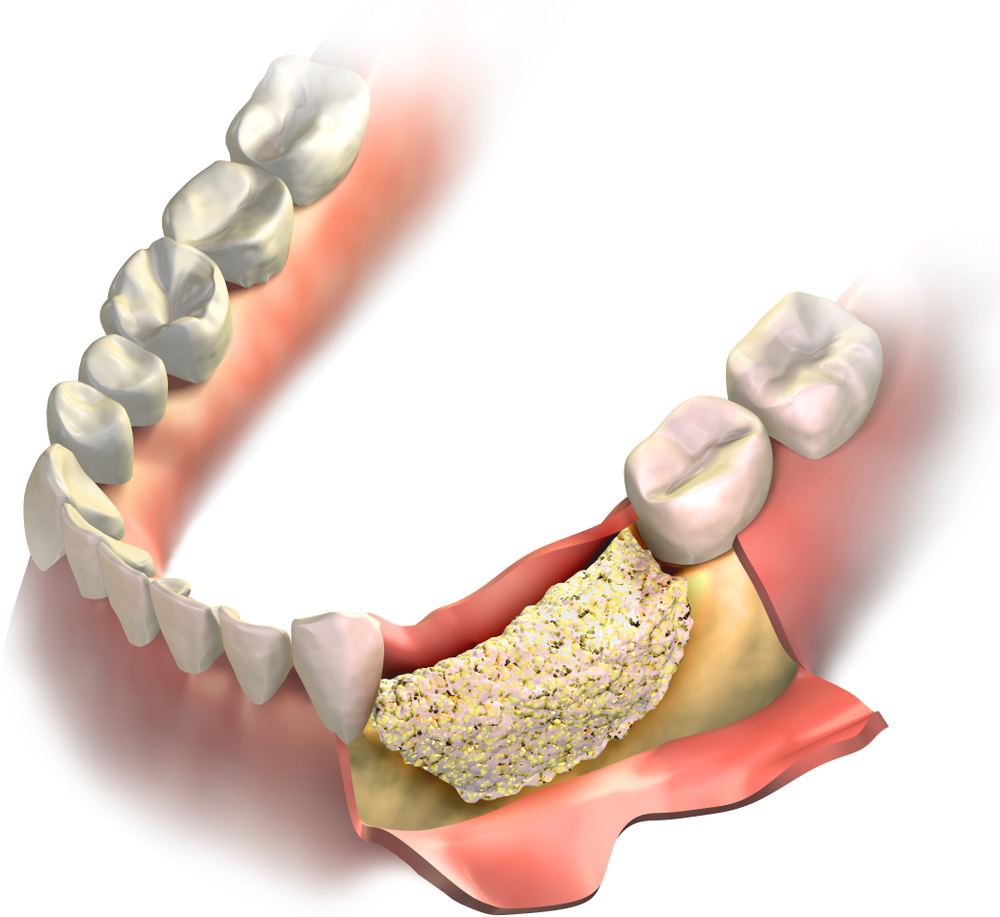Chances are high that you have heard the phrase dental implants tossed around a few times. However, bone grafting is rarely known. That is why in this blog we will go over everything you need to know about bone grafting.
What is Bone Grafting?
Bone grafting is a surgical procedure to repair or rebuild bones by transplanting bone tissue. Transplanting healthy bone tissue will recreate the bone and supporting tissues that are missing. The bone tissue used in a bone graft can come from your body or a donor’s. It provides a framework where the new, living bone can grow if it’s accepted by the body. At Carmichael DDS, we only use bone tissues from donors.
Bone grafting is a standard of care after tooth extractions in the US, even though it is not categorized when treatment is done outside of the country or in the military. A bone graft after extraction will help keep the surrounding teeth in their place and prevent bone loss in the jaw. If someone who removed a tooth later decides to get a dental implant, it will be much more expensive and take much longer than if they didn’t have a bone graft after the extraction. If a patient elects to get a dental implant, the bone graft is an absolute necessity as a prerequisite.

If there is no bone structure to support dental implants they cannot be placed, so the only option is to get dentures or to place a bridge. If patients want to do implants, then they would need a bone graft. It is essential to consider doing the bone graft at the time a tooth is extracted. It is the best time because it makes the procedure quicker, less complex, and less expensive for the patient. The sooner you do it after the tooth extraction, the better. The longer you wait, the more you loose bone. For an easier procedure for both the patient and the dentist, doing it the soonest possible is best.
Is Bone Grafting Normal?
Many of our dental patients ask if bone grafting is normal. The answer is yes. If you are a dental patient who might be getting dental implants, it is quite normal to be told during a consultation that bone grafting for dental implants might be necessary. There is nothing to worry about. It is a regular dental routine that is both pain-free and predictable.
When is Bone Grafting Necessary?
Bone grafting is necessary for patients that need dental implants who do not have a sufficient amount of healthy natural bones in his or her mouth to support them. The deficiency of natural bones can be caused by:
- Gum disease
- Face injury or trauma
- Development defects
- Empty space after teeth were removed
Who Needs Bone Grafts?
Pretty much anyone who has lost a tooth might need a bone graft before a dental implant is possible. This is true even for people who come in the day after they lose the tooth. The socket could be infected or the lost tooth could be the wrong dimensions to support an immediate replacement. It’s pretty rare for people to come in for an implant the same day they lose their tooth. Reasons could be financial or logistical. Whether it’s the next day or months after, bone loss occurs every day the tooth is missing.

How Do Bone Grafts Work?
There are several types of bone graft, and the one used on the patient depends on the extent of the damage suffered from as well as the location of the lost tooth. Different types of bone grafts include:
- Socket Graft – This is the most common type of bone graft. I’s purpose is to prevent the atrophy of the alveolar bone before it occurs. Usually the bone from a human donor is placed right into the socket. This prevents the collapse of the socket as well. After a socket graft, you would typically be ready for an implant in 4-6 months.
- Lateral Ridge Preservation Graft – This graft is used to increase the jawbone’s width to allow for a dental implant. Human donor bones are typically used for this. This procedure typically takes 4 to 6 months to heal.
- Block Bone Graft – This graft is necessary when there are large defects in the jawbone. To perform the block bone graft, a small block of bone is harvested from the back of the jaw. The block is placed into the defect and put into place with small titanium screws. This procedure typically takes 4 to 6 months to heal.
- Sinus Lift Procedure – For this procedure, usually an equine bone is used to expand the graft. The equine bone may be added to a human donor’s bone. This procedure is necessary when the patient needs an implant in the upper jaw, which is not typically stable enough to hold the implants on their own. Due to the anatomy of the sinus cavity, healing typically takes about 8-12 months.
After the procedure, patients will be given antibiotics to prevent infection. In some cases, pain medication can be given as well. However, most patients who receive bone grafts feel no pain and do just fine as long as they take the antibiotics.
Bone grafts are pretty common and are essential for some patients to get dental implants. A CT scan is the final prerequisite if a patient is ever interested in a dental implant to replace a missing tooth. The CT scan is a three-dimensional X-ray that will measure the bone density of any area that is missing a natural tooth. After the scan, the patient is given a USB drive that can be brought back to the dental clinic for the Doctor to do measurements to see if the patient is a candidate for future dental implants. We hope this blog gave you a better understanding of bone grafting. If you’re thinking about getting a dental implant, please call us at (858) 484-2560 or visit our website at https://carmichaeldds.com/ to book an appointment.




